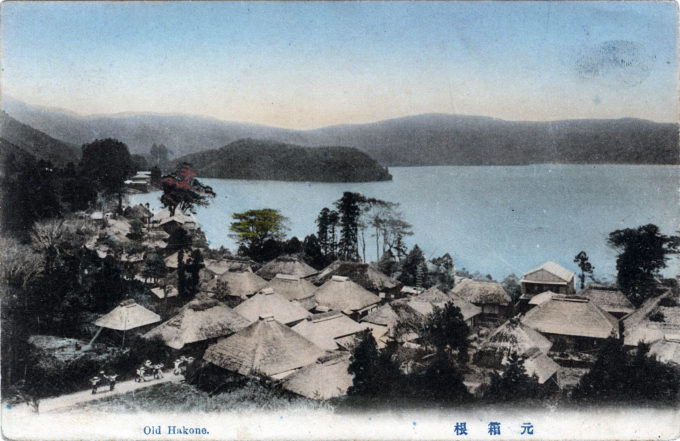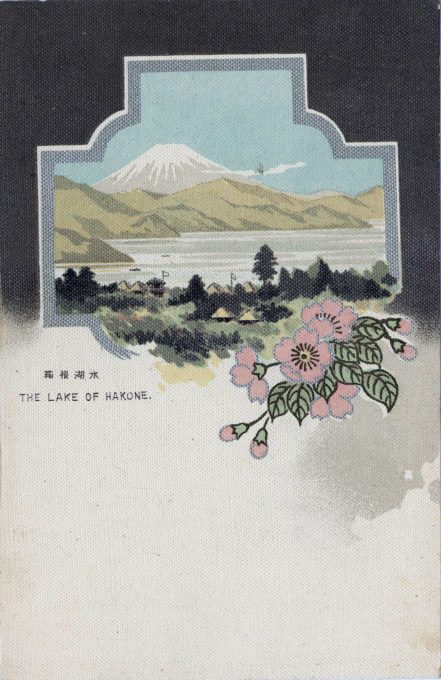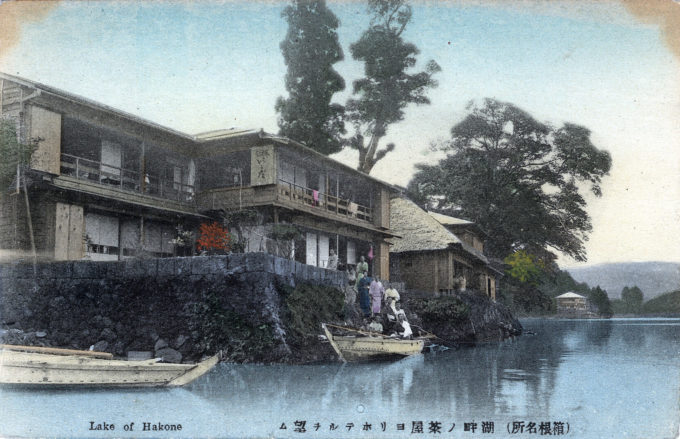
Old Hakone, c. 1910, on the southeast shore of Ashinoko (Lake Ashi, aka Lake Hakone). Hakone was once an important post station on the Tokaido, the site of a major barrier and official checkpoint at the passage known as the ‘Hakone Checkpoint’. Its importance rapidly declined with the fall of the Tokugawa bakufu in 1868 but the area saw a revival as a summer resort and hot springs (onsen) destination when “discovered” by foreign traders and missionaries in the late 19th century and the establishment of an imperial villa (now a public park) at Hakone in 1886.
See also:
Lake Hakone, c. 1920.
Hakone Hotel, Hakone, c. 1910-1950.
Naraya Hotel (Ryokan), Hakone, c. 1910.
Kaikatei Hotel, Hakone, c. 1910.
Mt. Fuji and Lake Hakone Railway Access and Bus Routes, c. 1930.
“This route is specially recommended, as uniting charm of scenery, accessibility, and an unusual degree of comfort . All tourists arriving at Yokohama are advised to devote a week to it, and if they have not so much time at two or three days to a portion of it.
“The Lake of Hakone”, c. 1920. Ashinoko is known for its views of Mt. Fuji, its numerous hot springs, historical sites, and ryokan.
“Even should they be disinclined for walking and sightseeing, they will find no place more pleasant for idling in at all seasons than Miyanoshita. It offers another advantage as a convenient starting point for the ascent of Fuji.
“The word Hakone, it should be observed, though employed by us, as by all Europeans to denote the village called by the Japanese Hakone-no-shuku, Hakone-no-eki, or Hakone-machi, is properly the general name of the entire mountainous district lying at the neck of the peninsula of Izu, between the Bays of Odawara and Suruga.
“For this reason the Japanese talk of Miyanoshita, Kiga, etc., as being ‘in Hakone.’ The original name of Hakone Lake (now, however, used only in poetry ) is Ashi-no-Umi, that is, the Sea of Reeds.”
– A Handbook for Travellers in Japan, by Basil Hall Chamberlain & W.B. Mason, 1901



